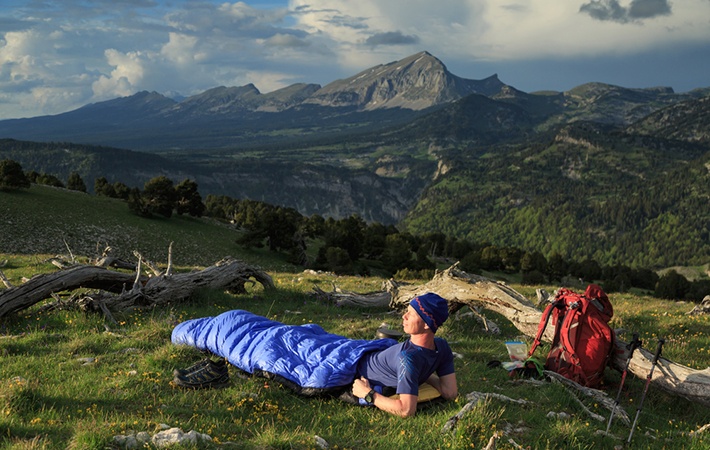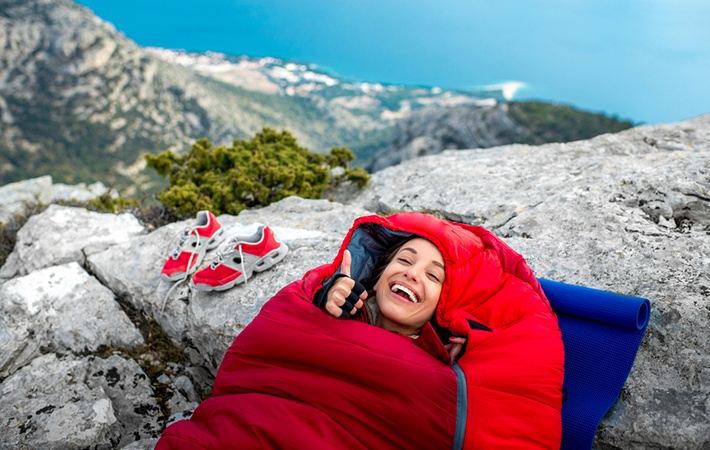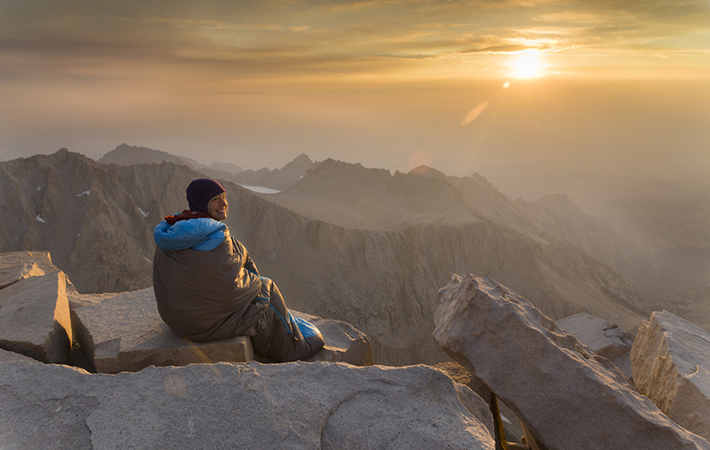Nothing beats sleeping under the starts, and nobody knows that better than backpackers.
I’ve had my fair share of billion-star hotels, and I know how difficult can it be to choose a proper sleeping system, especially when you want to pack light. The choice naturally comes down to either quilt vs. sleeping bag.
Both of these have their advantages, especially if you decide for a quality product made of great materials.
Which one is better? Most of my backpacker friends still use sleeping bags, but in the last couple of years I’ve noticed that quilts are carving their ways into backpacks across the planet.
More...
In this post, you will see the pros and cons of both sleeping systems, and in the end finally solve the dilemma of which one is better.
Know the Crucial Differences Between Quilt and Sleeping Bag

I've learned that many people think that quilts are just a different type of sleeping bags.
Well, is that true?
In a way, yes. The quilt manufacturers took a sleeping bag and get rid of everything that is not absolutely necessary.
So, unlike the sleeping bags, quilts don't have the insulation under the bag. Now, while this does seem like a necessary feature, the only thing you actually need for an effective insulation is air trapped in and around.
But this is not the only thing characteristic for sleeping bags quilts nixed.
They also don't have mummy hood and the zipper, which means that their bottom is open, thus making the quilt more versatile than the traditional sleeping bag – you can use it as a blanket as well.
The main difference, however, is that quilts cover only the top part of your body.
Discover the Advantages of Sleeping Bags

While I lean more to the quilt side of this story, there are some indisputable advantages of traditional sleeping bags, especially if you wiggle a lot during the night or if your backpacking destination is chillier at evenings.
For example last year I was camping in the amazing Scotland, where the nights can become freezing, and for that occasion, I chose a classic sleeping bag over a quilt.
It is because the tube design is resistant to air drafts. The mummy hood also helps in such weather conditions.
Another thing I like about the sleeping bags is that they are simpler when it comes to setting up.
Finally, if you've been backpacking for a long time, then you know that a good-old sleeping bag combines the feeling of security and warmth, using a simple and clever design.
Find out the Arguments for Quilt
So, why I prefer quilts? Well, there are many reasons, and you will soon find out each of them:
- Quilts are lighter than traditional sleeping bags, and if you go backpacking as frequently as me, you will agree that the weight of the things you are carrying in your backpack is one of the most significant things to consider. And if it’s light, and still serves its purpose, why go with the alternative?
- If you choose a quality quilt, it will keep you just as warm as a sleeping bag. The insulation sleeping bags have on the bottom sounds tempting and relevant, but in fact, it is not effective because compressed insulation doesn't provide warmth.
- With quilts, you have more freedom to move. While sleeping bags do prevent air draft when you wiggle at night, they also restrict your movements.
- Quilts are more affordable, because they use less material than conventional sleeping bags and because they don’t have a zipper.
- They take up less space, which is an imperative feature when you need to pack a bunch of things in your backpack including packages of food and some clothes.
- Unlike sleeping bags which have mummy hoods, in a quilt, your head is outside which means that will be less respiration and moisture buildup.
Be Aware that Quilts are Not Perfect
Although I’m all about the freedom of movement and versatility you get with a quilt-style sleeping bag, there are some frequent concerns when it comes to this sleeping method, and it would be unfair of me not to mention them.
If you would ask backpackers around the world to tell you the worst flaw of quilts, they would definitely say the fact that quilts often let the draft in, because unlike traditional sleeping bags, they don't cover your entire body, thus sealing the warmth in.

Also, some outdoor enthusiast thinks that the lack of the hood is a problem, especially in colder climates. However, there are solutions from both of these issues.
First, of them is coming from quilt manufacturers that have invented attachment systems which are preventing the draft from entering.
As for the lack of a hood, you can always do what I do and compensate that with a beany.
How to Make the Final Decision? Quilt vs. Sleeping Bag

Based on everything that's said in this post, you must realize how difficult it is to make a final decision if you don't already have your favorite.Do you want my advice? Try them both out and see which one you like more.
As I already said, both have their pros and cons.
But, regardless of which product you choose, you need to be aware that the quality is what matters the most, which is why we'll discuss some more about the prerequisites of a good sleeping system.
Sleeping Bag/Quilt Must-Haves
Whether you choose a quilt or a sleeping bag, you need to know how to spot a quality product which will keep you warm and safe during your adventures. Here are some factors to have in mind:
- Weight: Obviously quilts are lighter than sleeping bags, but you should still consider the size of your backpack and the weight you are able to carry on your bag because backpacking is all about your endurance and comfort.
- Warmth: The important thing to know is that it is not the sleeping equipment that creates warmth, your body does that. Sleeping bags and quilts only trap your natural body warmth in enclosed space. So, the better the insulation – the better the product.
- Temperature rating: The most efficient way to choose a sleeping method is to assess the temperature rating. In most cases, you’ll go with +10° and lower for winter, +35° and higher for summertime and +10° to +35° for spring and fall.
- Insulation: There are two main types of sleeping bag insulation: synthetic and down. The first one is cheaper and retains heat better than down when wet. However, it usually weighs more, and it is bulkier. Down insulation is more expensive, but it does last longer and has a better warmth-to-weight ratio, so I would always go with it instead of the cheaper alternative.
- Length: There is nothing worse than when the sleeping bag or a quilt is too short, so it is always better to go a size up.
- Width: A little extra width, especially in a quilt, is essential for comfort and preventing drafts when you’re wiggling during the night.
- Durable water repellent is a necessary feature when you are spending the evenings in a humid climate. This is a treatment that makes the water bead up on the outside shell of the quilt or a sleeping bag instead of soaking in. This is a feature that wears off over time, but it can be reapplied.
- Price: Finally, the price is an important factor to consider, but it shouldn’t be decisive. It is imperative to find the perfect ratio of price and value, and avoid going for the budget bags, which doesn’t mean you have to decide for the high-end product either.
Bottom Line?
There is a winner for every backpacker depending on your preference. For me, the obvious champion in this battle is the quilt.
It gives you almost everything the sleeping bag provides, but it also comes at a lower price, and it is much easier to pack and carry.
So, after reading all this, I'm sure you will be able to make the best decision for your next backpacking endeavor.
